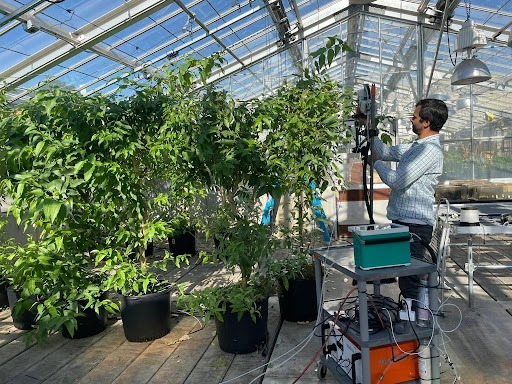mCAFEs-supported metabolomics work has helped Earth & Environmental Sciences Area (EESA) scientists discover a new carbon pathway occurring during photosynthesis that sheds light on plant growth and resilience.

Photosynthesis, despite being a broadly understood process, is actually a complex series of light-dependent reactions that scientists have been trying to fully unravel for hundreds of years. A research team led by EESA scientists has discovered a new carbon pathway, stemming from what is known as the C1 photosynthesis reaction, in which plants use carbon dioxide (CO2), water, and sunlight to make oxygen and organic compounds needed for growth. This pathway occurs during photosynthesis to help plants transform carbon into molecules that help build tree biomass including cells, carbohydrates, proteins, DNA molecules, and more.
The discovery, published in Communications Biology, could help scientists better understand how plants grow with potential impacts on forestry management as well as in the cultivation of tree species farmed for wood, such as poplar.
The m-CAFEs Science Focus Area supported the study’s metabolomics analysis, which involved identifying and quantifying small molecules to elucidate how California poplar tree leaves use and allocate carbon during photosynthesis. This high-resolution tracking allowed the researchers to characterize the previously undetected C1 carbon pathway.
Read more on the EESA news page.
